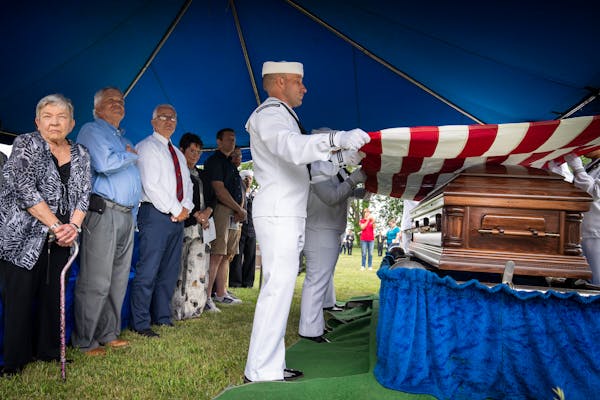The remains of a Stillwater sailor killed in the attack on Pearl Harbor have been identified and will be returned to Minnesota for burial, the U.S. Defense Department announced.
Navy Fire Controlman Third Class William F. Gusie was 19 when he was aboard the battleship Oklahoma on Dec. 7, 1941, when it was torpedoed and sunk, killing 429 sailors and Marines.
His remains were identified in 2021. It took three years to prepare for his funeral because the pandemic created a backlog for military officials working to identify, return and honor MIAs from various military campaigns, said Gene Hughes, a public affairs officer with Navy Personnel Command.
Details on Gusie's surviving family members and plans for his June 12 burial in Minneapolis will be shared next month, Hughes added.
The Oklahoma was moored at Ford Island, Pearl Harbor, on the morning of Dec. 7 when the Japanese attack came. The ship sustained multiple torpedo hits and quickly capsized. Navy personnel recovered the bodies of crew members for three years, and the unidentified remains of deceased crew members were interred at Halawa and Nu'uanu cemeteries in Oahu.
The American Graves Registration Service in 1947 disinterred the remains and transferred them to a laboratory at Schofield Barracks in Oahu for identification. Staff were able to identify only 35 sailors at the time. The unidentified remains were then buried at the National Memorial Cemetery of the Pacific in Honolulu; a military board in 1949 classified them as nonrecoverable.
In 2015, the remains were exhumed over several months in an effort to use newly developed technologies to identify the sailors. Defense POW/MIA Accounting Agency scientists used dental and anthropological analysis, while Armed Forces Medical Examiner System scientists used advancements in DNA testing; Gusie's remains were identified on Sept. 23, 2021, according to the Defense POW/MIA Accounting Agency.
Gusie's name is recorded on the Walls of the Missing at the National Memorial Cemetery of the Pacific. A rosette will be placed next to his name to indicate that he has been accounted for, according to the DPAA.
.

Charges: Minneapolis man, out-of-state cohort filed more than 100 false tax claims totaling $3M

Walz weighs in on canceled Minnesota cannabis license lottery: Litigation 'happens in every state'

Gov. Tim Walz calls for tougher Medicaid fraud penalties as FBI investigates autism centers

Minnesota abandons early cannabis lottery, retail pot sales likely to start later than expected

